Archives
- 2025-10
- 2025-09
- 2025-03
- 2025-02
- 2025-01
- 2024-12
- 2024-11
- 2024-10
- 2024-09
- 2024-08
- 2024-07
- 2024-06
- 2024-05
- 2024-04
- 2024-03
- 2024-02
- 2024-01
- 2023-12
- 2023-11
- 2023-10
- 2023-09
- 2023-08
- 2023-07
- 2023-06
- 2023-05
- 2023-04
- 2023-03
- 2023-02
- 2023-01
- 2022-12
- 2022-11
- 2022-10
- 2022-09
- 2022-08
- 2022-07
- 2022-06
- 2022-05
- 2022-04
- 2022-03
- 2022-02
- 2022-01
- 2021-12
- 2021-11
- 2021-10
- 2021-09
- 2021-08
- 2021-07
- 2021-06
- 2021-05
- 2021-04
- 2021-03
- 2021-02
- 2021-01
- 2020-12
- 2020-11
- 2020-10
- 2020-09
- 2020-08
- 2020-07
- 2020-06
- 2020-05
- 2020-04
- 2020-03
- 2020-02
- 2020-01
- 2019-12
- 2019-11
- 2019-10
- 2019-09
- 2019-08
- 2019-07
- 2018-07
-
br Experimental br Results and discussions
2022-06-23
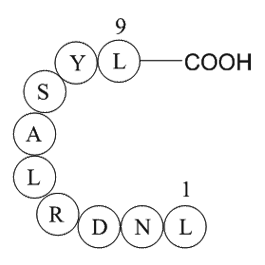
Experimental Results and discussions Conclusions In this work, a novel label-free ECL biosensing method was developed to detect TDG activity using signal amplification strategy of HCR which was triggered by DNA functionalized AuNPs. The label-free ECL biosensing platform has been construct
-
Acute effects of FZ were not altered in GluR A
2022-06-23
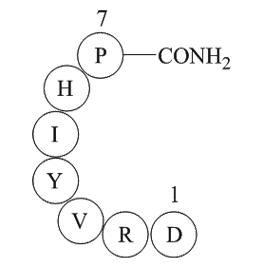
Acute effects of FZ were not altered in GluR-A−/− mice, thus providing a solid basis for comparing the effects of repeated drug administration. In addition, GluR-A subunit deficiency did not affect the basal behavior of saline-treated animals, despite the GluR-A−/− mice having been described as hype
-
br Materials and methods br Results br Discussion
2022-06-23
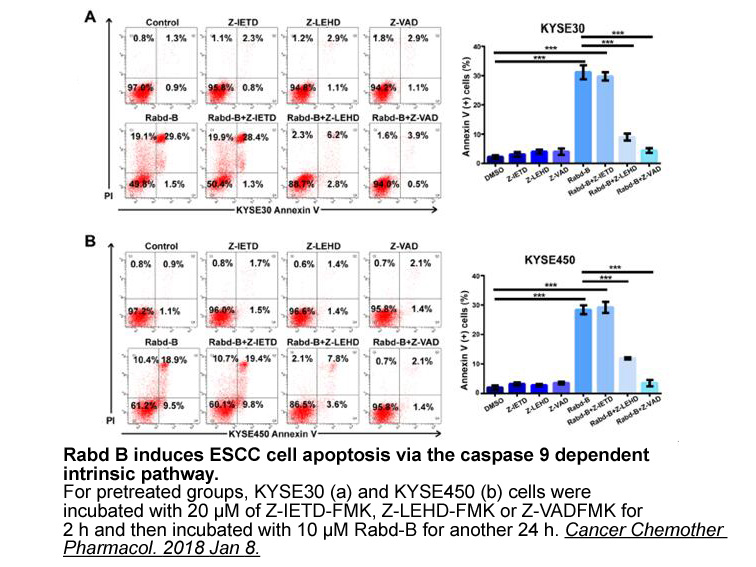
Materials and methods Results Discussion In this study, we demonstrated, for the first time, that manipulation of AKR1D1 expression and activity is able to regulate glucocorticoid availability in liver and non-liver cell lines. AKR1D1 over-expression leads to increased glucocorticoid cleara
-
Homeobox genes can promote oncogenesis through multiple
2022-06-22
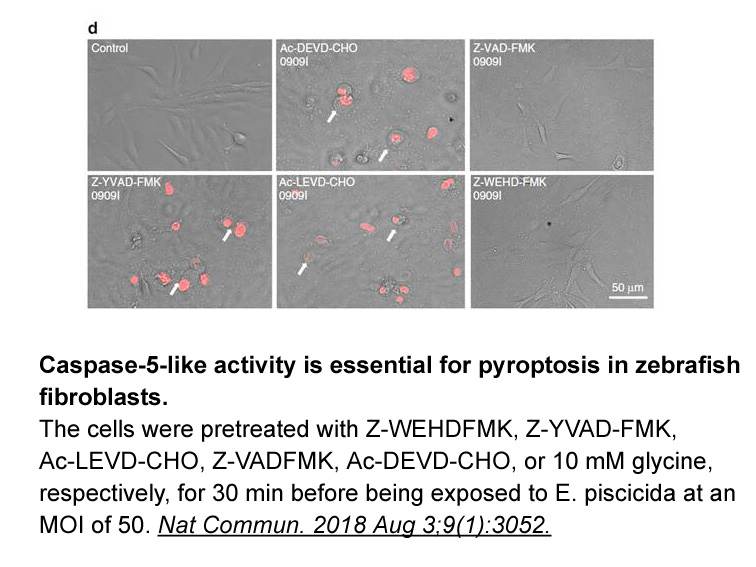
Homeobox genes can promote oncogenesis through multiple mechanisms, including gene translocation, loss of heterozygosity, gene amplification, DNA methylation, liothyronine sodium remodeling, etc. For instance, translocation-mediated fusion of HOXA9 or HOXA13 on chromosome 7p15 with the nucleoporin
-
Statins are recognized by their nephroprotective effect Chmi
2022-06-22

Statins are recognized by their nephroprotective effect (Chmielewski et al., 2002). The hepato- and nephroprotective effects of silymarin are also well studied (Alqasoumi, 2014, Mohamed et al., 2018). Several studies documented increasing this question of FXR by statins (Byun et al., 2014& (Lu et a
-
The synthesis route of strobol C started
2022-06-22
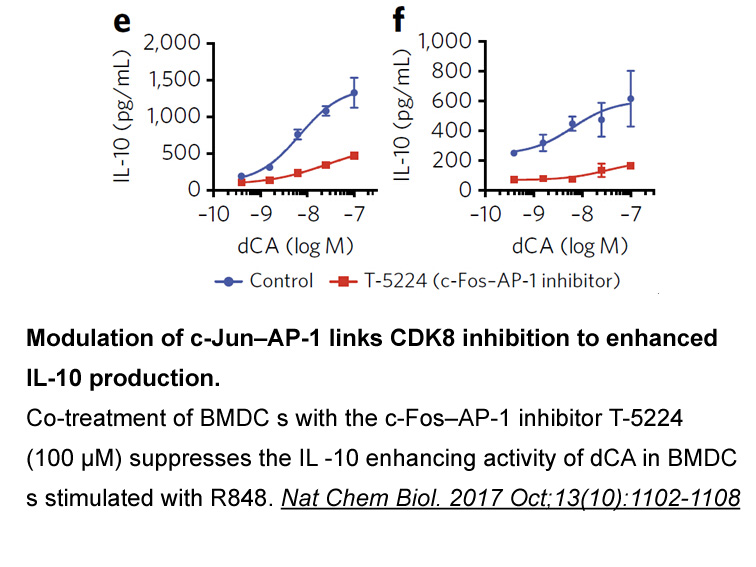
The synthesis route of strobol C started from kirenol, which was treated with phosphomolybdic hydralazine hcl hydrate in acetone to afford isopropylidenkirenol () as illustrated in . Treatment of with acetic anhydride in a mixture of dry pyridine, gave fully protected intermediate in 84.5% yields. H
-
(+)-MK 801 Collectively these observations demonstrate that
2022-06-22
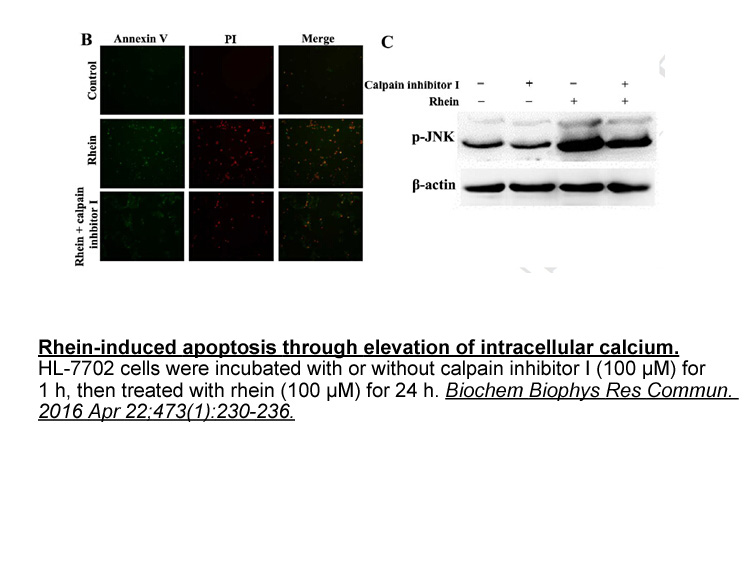
Collectively, these observations demonstrate that FAAH is functionally positioned to modulate the actions of AEA and other NAEs on BLA neurons and anxiety processes mediated by this region. By extension, manipulations that lead to alterations in FAAH activity, such as stress or administration of com
-
When taken together data suggest CRF
2022-06-22
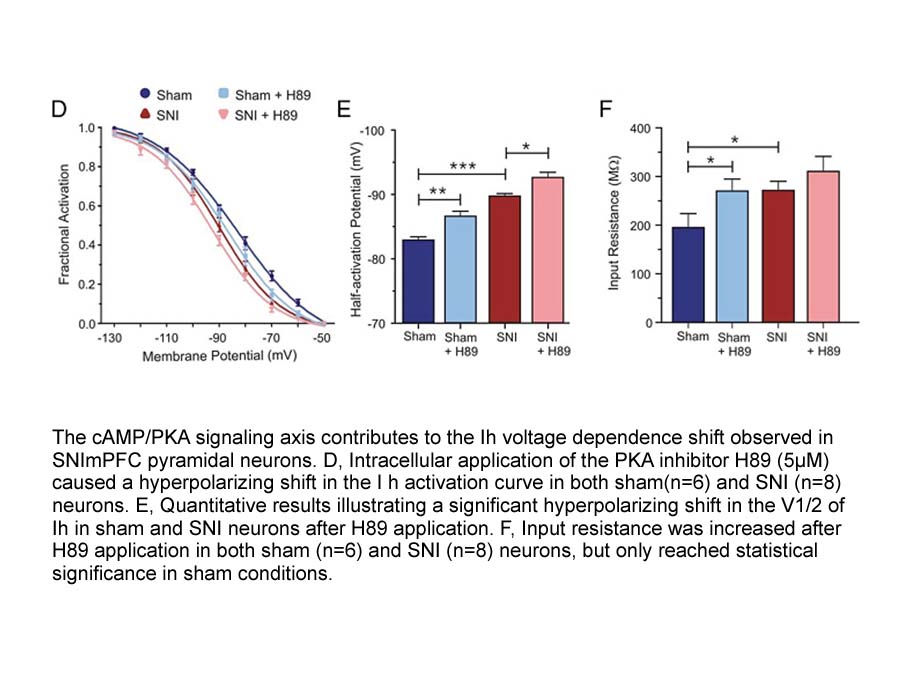
When taken together, data suggest CRF plays a central role in linking the HPA axis, the eCB system, and the amygdala with anxiety (Hill et al., 2009, 2010a; Hillard et al., 2011). In elaborate studies in mice, Gray and colleagues (Gray et al., 2015) showed stress-associated increase in CRF concentra
-
In the next set of experiments we sought to
2022-06-22

In the next set of experiments, we sought to determine the source of lysosomal cytokine inhibitors inhibition by oxidative stress. Lysosomal exocytosis probably involves multiple steps including vesicle positioning, delivery, docking and fusion. The previous evidence and data in Fig. 1C,D show that
-
Structurally HMTs can be broadly categorized
2022-06-22

Structurally, HMTs can be broadly categorized into three functional enzymatic families, the SET (Suppressor of variegation, Enhancer of zeste, Trithorax)-domain- containing methyltransferases, the non-SET DOT1-like (DOT1L) lysine methyltransferases, the PRDM family, containing a PR (PRDI-BF1-RIZ1 ho
-
In hypoxic breast cancer cells BNIP mediated autophagy
2022-06-22
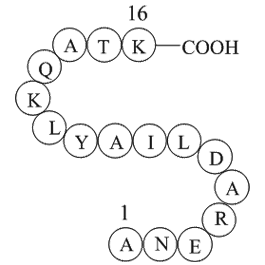
In hypoxic breast cancer cells, BNIP3-mediated autophagy activation and elevation of amino Oseltamivir acid levels were notable. BNIP3, a BCL-2 family protein, is known to be transcriptionally regulated by HIF-1α and to be involved in cancer cell death in hypoxic conditions [51]. As a link to autoph
-
Similar to Rac Cdc and
2022-06-22
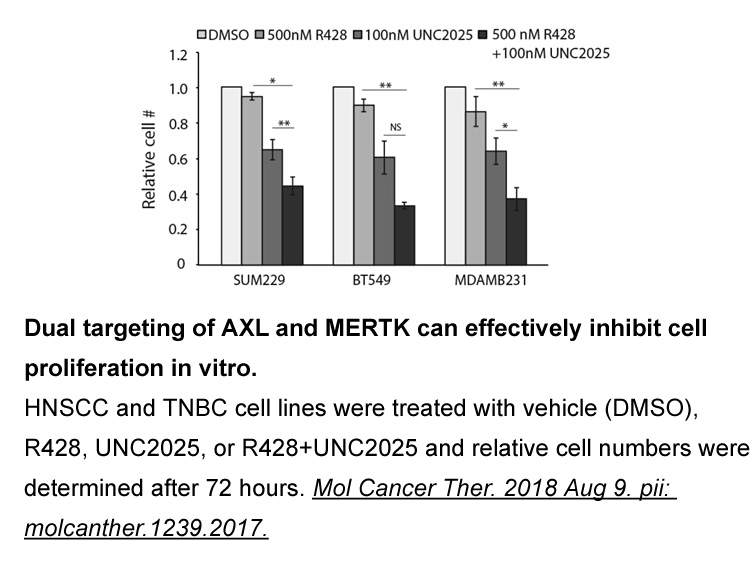
Similar to Rac1, Cdc42, and RhoA, expression of Rnd3 is also increased under hypoxic conditions, involving Hif1α mediated transcriptional activity. Here, downregulation of Rnd3 abolishes hypoxia-induced cell migration via a mechanism involving the chemokine receptor C-X-C motif chemokine receptor 4
-
br Concluding Remarks Given the increasing global
2022-06-21
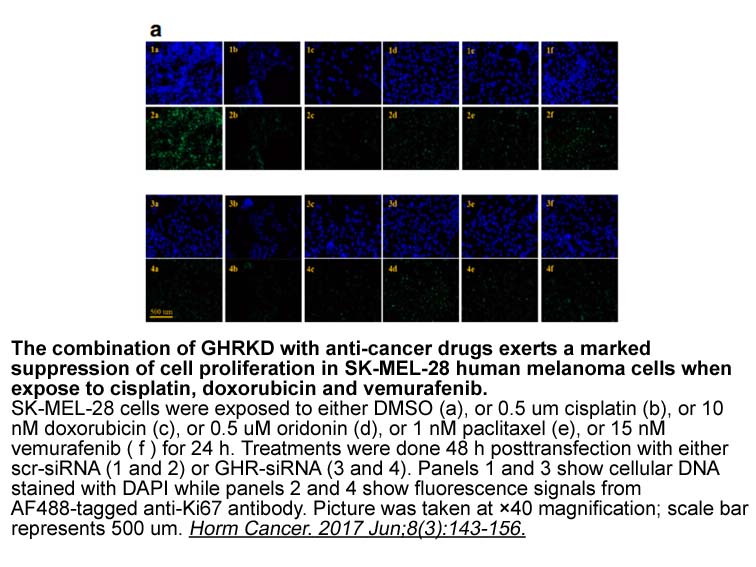
Concluding Remarks Given the increasing global incidence of metabolic disorders, new drugs that lower body weight and improve glucose tolerance are desperately needed. While we still have a long way to go, GPR55 might be an interesting target to explore, given its expression in numerous metabolic
-
Next to their indirect effect on ASBT expression
2022-06-21
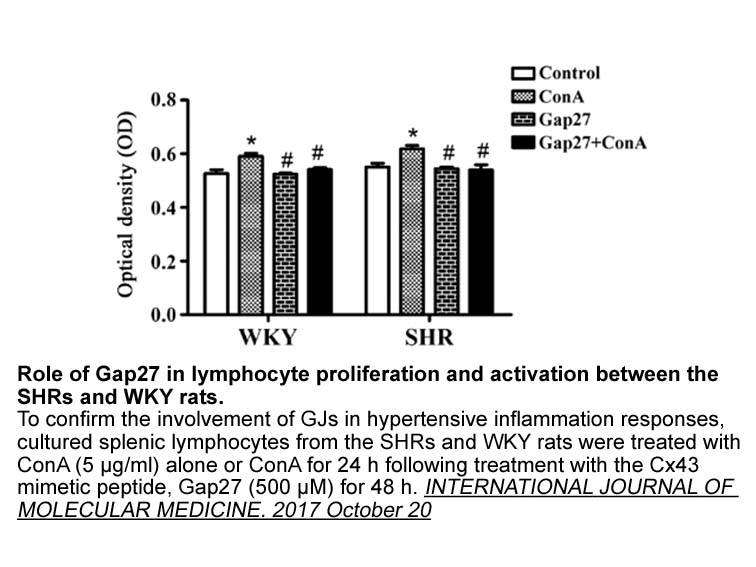
Next to their indirect effect on ASBT expression, microbiota are also directly involved in BA homeostasis and FXR-FGF15/19 signaling. Different species of intestinal microbiota have the ability to biotransform BAs mainly by deconjugation and subsequent de-hydroxylation, the latter resulting in more
-
Curcumin is the active ingredient extracted from the
2022-06-21

Curcumin is the active ingredient extracted from the natural medicine turmeric rhizome (Goel et al., 2008, Aggarwal and Harikumar, 2009). Studies have shown that curcumin has anti-tumor, anti-inflammatory, antioxidant and antimicrobial properties (Larsen et al., 2007, López-Lázaro, 2008). Although c
14955 records 429/997 page Previous Next First page 上5页 426427428429430 下5页 Last page